Small Wonder
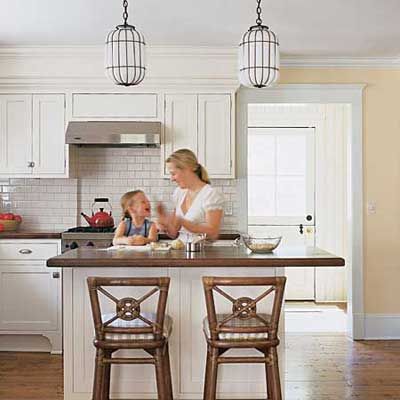
Luke and Allison Babcock loved the antique charm of the 19th-century houses clustered around the historic seaside village of Sag Harbor, New York. They wanted the 1880s cottage they bought and renovated to have a breezy, summer-house feeling year-round.
A new wing with a screened-in porch adjacent to the kitchen did the trick. “We love fresh air, and we love having our kitchen open to a porch so that it feels like one big room,” says Allison, who runs her own interior design business.
Hub of the Home
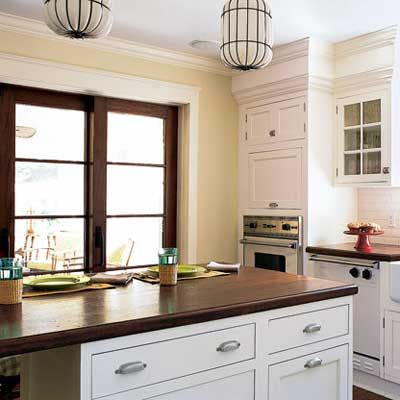
The L-shaped kitchen, designed by Smith River Kitchens, includes a wall oven and sink along the window side and a range and refrigerator along the adjacent wall. The island offers workspace and room for casual dining, while an office area holds space for recycling and paperwork.
Mahogany countertops, double-crown molding, salvaged pine floors, Shaker-style cabinets with footed bases, and vintage glass jars wired as pendant lamps give the kitchen its traditional feel.
A “lift-and-slide” mechanism allows the four French doors to double up, then disappear into wall pockets on either side of the 9-foot-wide opening, creating a seamless transition between the kitchen and screened porch.
Year-Round Getaway
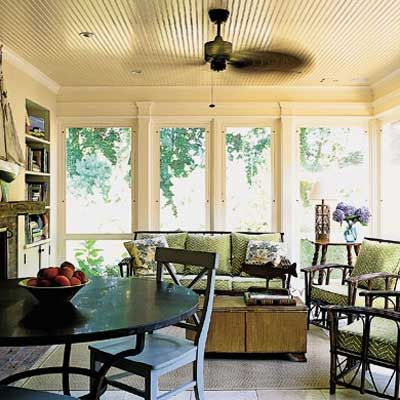
Though all new, the open-air great room is entirely in keeping with the simple aesthetic of the original farmhouse—from the kitchen’s antique pine floors and flat-panel cabinetry to the porch’s beadboard ceiling.The porch functions as the family room year-round. Screen panels are changed out for glass versions in cold weather. The new Rumford firebox is an 18th-century design that maximizes the amount of radiant heat put into the room; it is topped with an antique beam for a mantel.
Seamless Addition
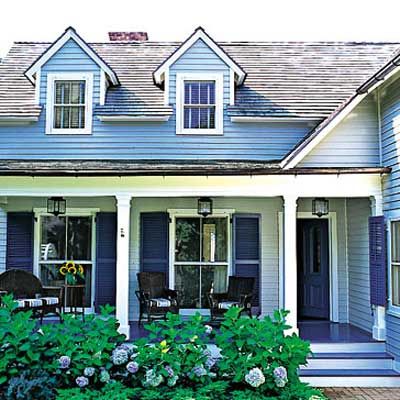
The new side wing holds a living room with the screened porch in back. Along the front is a 6-foot-deep porch and entry; two dormers up top maximize living space in the upstairs master suite.
Salvaged Stairs
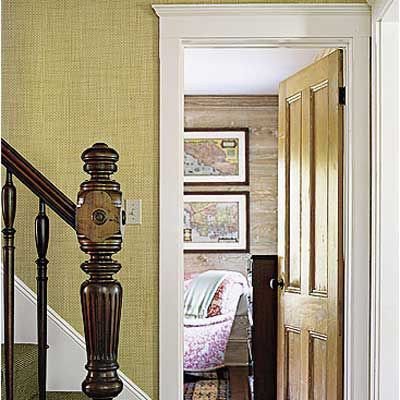
The original front entry and staircase were relocated from the side of the house to the center of the new plan, improving circulation between the new and old parts. The rebuilt stairway is anchored with a vintage newel post and reclaimed pine treads for an authentic look.
The downstairs den still has its original pine floors. During the remodel, 12-inch limed oak boards were installed horizontally as paneling.
Remnants From the Past
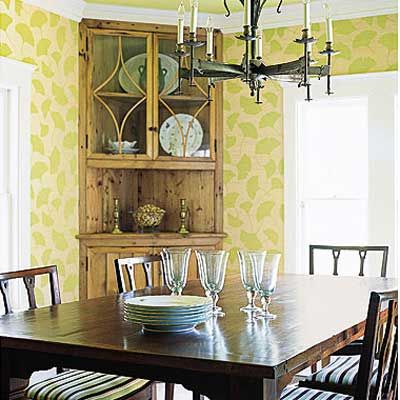
The dining room, which had been the living room, is one of the few spaces not completely gutted during the renovation. The homeowner had corner cupboards built from salvaged pine to mimic ones she had glimpsed in an antiques shop.
Blending In
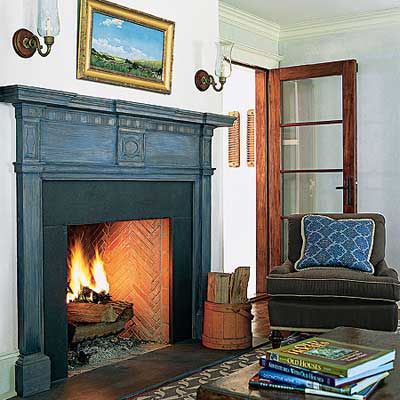
The wood mantel over the new Rumford fireplace is a circa-1800 find brightened with blue milk paint that Allison bought from a Philadelphia antiques shop. Along with the original doors (salvaged during the renovation process), it helps make the living room addition look as though it has always been there.
Vintage Vibe
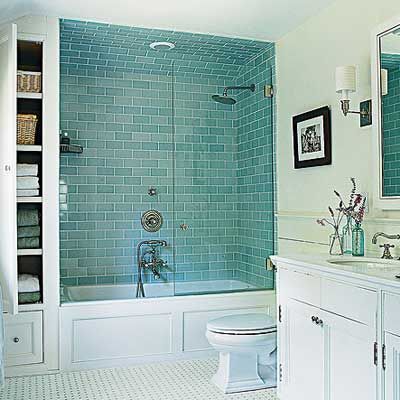
The master bathroom’s basketweave tile floor, pale blue subway-tiled shower, and paneled tub create a vintage look in the newly built 7-by-14-foot room. Reclaimed poplar for the wainscoting adds to the character and appearance of age.
Classic Quarters
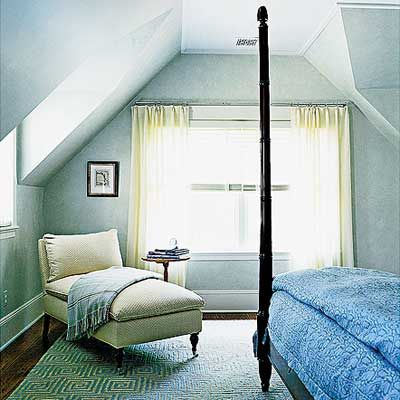
The two-story addition’s low roofline and window dormers give the upstairs master bedroom a genuine old-house feeling. The cozy space has the kind of steeply pitched ceiling and dormer cut-outs that instantly telegraph days gone by.
Basement Layout
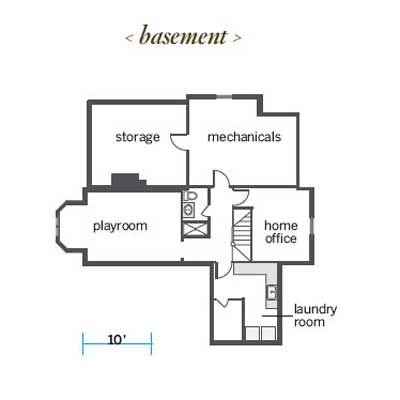
The old house needed a new foundation. To pour it, the whole structure was jacked up about 5 feet above existing grade for three weeks. Not only did the new foundation provide the requisite support for any additions, it allowed the homeowners to excavate for a full basement, with new storage, laundry, office, and playroom space—an expansion that helps maintain the low profile of the house from the street.
First Floor Layout
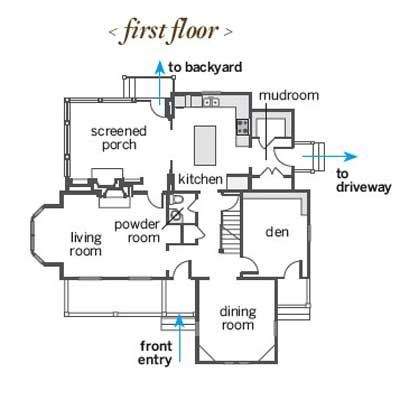
The new side wing holds a living room and screened porch on the first floor. “What you see today is basically 60 percent a new house,” says local contractor Jesse Koncelik, whose crew took most of the rooms down to the studs and rebuilt the kitchen addition with a second story. The original 1,200-square-foot house grew to twice that size.
Second Floor Layout

The added wing includes a master suite and an extra bedroom upstairs, while the rebuilt kitchen is topped with a third new bedroom. To weather the 10-month renovation, the Babcocks rented another house in town.
